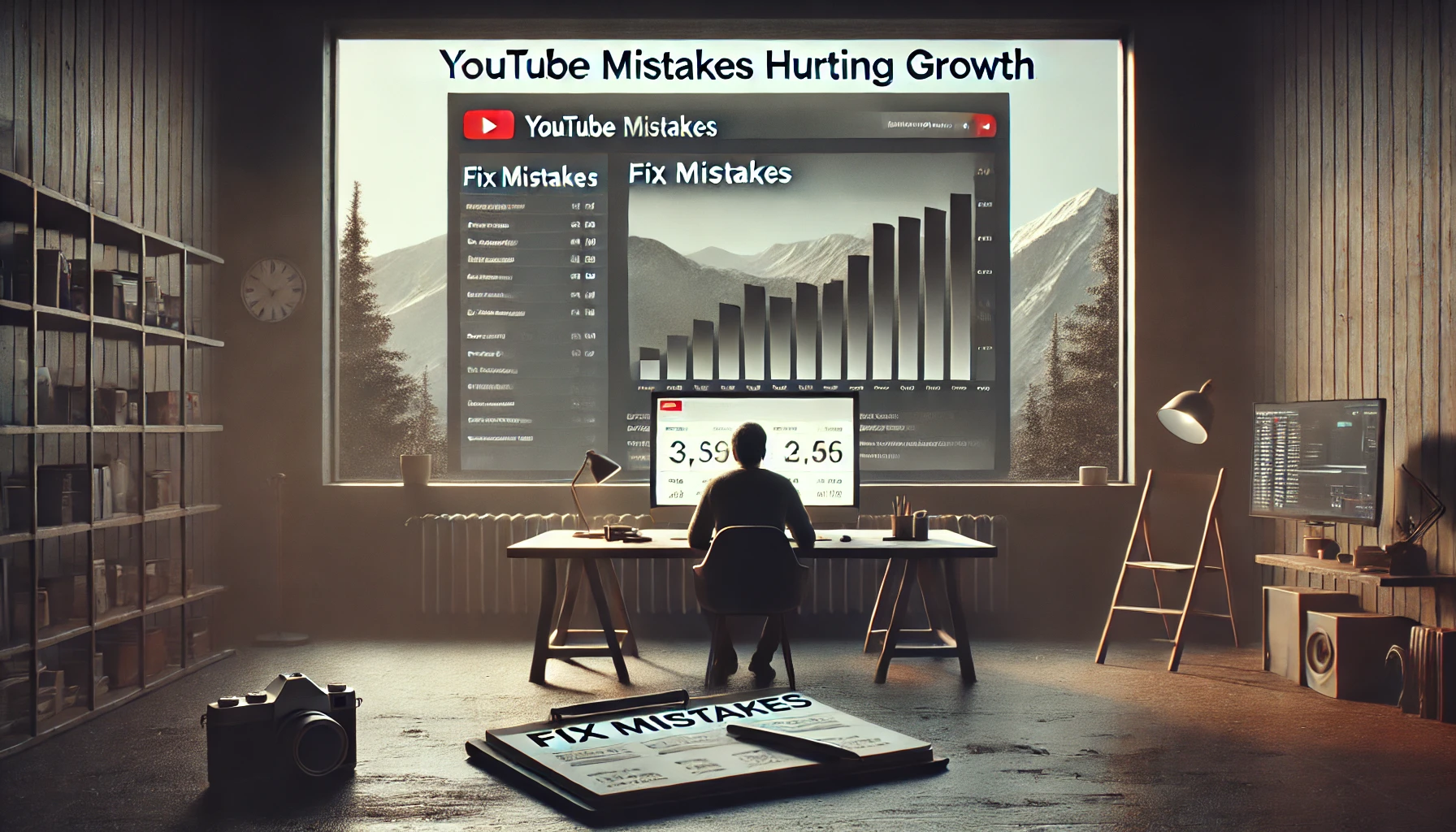What if I told you that AI could transform your ideas into money-making digital products?
It’s true!
AI is revolutionizing creativity and empowering individuals to launch profitable ventures with minimal effort.
Whether you’re an entrepreneur, freelancer, or hobbyist, there’s never been a better time to leverage AI for creating and selling digital products.
In this guide, we’ll explore 10 exciting digital products you can build with AI, share tips for getting started, and show how AI tools can save time and boost your profits.
Ready to tap into the future of digital entrepreneurship?
Let’s dive in
Ebooks and Online Guides
I’ll be honest, I started selling ebooks a few years ago, and I thought they were fading out with videos, podcasts, and social media taking over.
But ebooks are still popular because they offer a level of depth and detailed knowledge that other formats don’t provide
People want detailed, useful knowledge, and ebooks provide it in a simple, focused way.
In 2025, the demand for ebooks remains strong, and for good reason.
They’re low-cost to produce, scalable, and can be tailored to any niche imaginable.
Whether it’s a 20-page guide to mastering LinkedIn or a 300-page comprehensive handbook on AI for beginners, ebooks offer creators the chance to build a product that educates while generating passive income.
Plus, with platforms like Amazon Kindle Direct Publishing (KDP), Gumroad, and Etsy, it’s easier than ever to reach a global audience without leaving your couch.
But let me give you a piece of advice don’t just slap together a bunch of generic information and call it an ebook.
People know the difference between fluff and value.
Find your niche, understand your audience’s pain points, and deliver a solution they can’t resist.
That’s how you stand out in a sea of mediocre PDFs.
How AI Tools Simplify Ebook Creation
I’ll admit, writing an ebook used to be overwhelming.
The research, outlining, and writing all felt like a challenging uphill climb.
Then I discovered AI writing tools like ChatGPT and Jasper, and everything changed.
These tools can help you outline your content in minutes and even draft sections based on your input.
The key, though, is to use them as a partner, not a crutch. I always go back to refine the tone, add my personal touch, and make sure the content flows naturally.
For example, I once used an AI tool to create a 5,000-word draft for a guide on time management.
While the AI nailed the structure, I had to tweak the examples and inject some humor to make it feel authentically me.
AI will save you hours, but your readers still want to hear your voice.
AI Tools for Designing Professional Ebook Layouts
Let’s talk about design.
Before AI, I’d spend hours messing around with Canva or PowerPoint, trying to make my ebook look polished.
Enter AI design tools like Canva’s Magic Design or Designrr, and suddenly I felt like a pro designer.
These tools can automatically format your text, create stunning layouts, and even generate matching graphics.
One time, I turned a 30-page text-heavy document into a sleek, beautifully designed ebook in less than an hour.
Pro tip: stick to simple fonts and clean designs. You don’t want to overwhelm readers with too many colors or fancy fonts. Clarity is key, especially if you’re selling educational content.
Popular Topics for AI-Generated Ebooks
When it comes to choosing a topic, think about what people are actively searching for.
Self-help ebooks, for instance, never go out of style because everyone’s looking to improve some area of their life whether it’s productivity, confidence, or mindfulness.
I once wrote a short guide called 5 Steps to Stop Procrastinating, and it sold surprisingly well because it was practical and relatable.
AI tutorials are another hot niche.
People want to learn how to use tools like ChatGPT, MidJourney, and Jasper to boost their careers or side hustles.
I’ve seen ebooks like AI for Writers or How to Generate Art with AI absolutely crush it because they tap into current trends.
And of course, business tips are evergreen.
From starting a side hustle to scaling a freelance business, people are willing to pay for ebooks that offer actionable advice they can implement right away.
The trick is to find a unique angle like targeting solopreneurs, small business owners, or a specific industry.
Digital Art and AI-Generated Graphics
When I first heard about AI tools creating art, I’ll admit I was skeptical.
Could an algorithm really produce something as meaningful as a human artist?
Turns out, not only can it create jaw-dropping visuals, but it also opens up incredible opportunities for artists to scale their creativity and income.
Selling art in the era of AI isn’t about replacing human creativity it’s about amplifying it.
AI has made digital art more accessible than ever.
You don’t need to be a pro with Photoshop or have years of drawing experience.
All you need is an idea, a bit of experimentation, and the right tools.
And let’s face it, the market for unique digital art is booming.
Whether people are looking for wall prints, custom portraits, or quirky designs for their mugs, there’s a demand for creative visuals everywhere.
Here’s the best part: AI lets you focus more on creativity and less on the technical grind. That means you can produce a whole series of art pieces in days instead of weeks. Plus, you can explore styles and ideas you never thought possible. Seriously, AI is like having an extra brain or maybe a team of assistants working alongside you.
Best AI Tools for Digital Art Creation
If you’re new to the AI art world, let me introduce you to the game-changers.
First up is DALL·E. This tool can take the wildest prompts and turn them into stunning visuals.
I once typed in “a futuristic city under a pink sky with flying cars” just for fun and the result looked like it belonged in a movie poster.
Then there’s MidJourney, which, in my opinion, creates some of the most detailed and visually stunning pieces out there.
It’s perfect for conceptual designs, fantasy art, or even abstract visuals.
I’ve used it to create backgrounds for digital posters that sold surprisingly well.
For those who need versatility, Adobe Firefly is a powerhouse.
It’s part of Adobe’s ecosystem, so you get access to their classic editing tools alongside AI-generated visuals.
Firefly is great if you want to create something unique but still want the ability to tweak and perfect it afterward.
Pro tip: Don’t just stick to one tool experiment! Each AI tool has its strengths, so try combining outputs from multiple platforms for more dynamic results.
Where to Sell AI Art Online
Selling your AI-generated art online is easier than ever. If you’re into physical products, Etsy is a fantastic option. You can sell digital downloads of your art or even partner with print-on-demand services to create posters, canvas prints, or t-shirts. People love unique, customizable designs, and Etsy’s audience is all about supporting creators.
For purely digital products, Gumroad is a lifesaver. You can list your art as instant downloads, bundle multiple pieces together, or even sell access to collections with a “pay-what-you-want” pricing model. Gumroad is great if you want full control over pricing and branding.
If you want to reach a larger audience with minimal setup, try Redbubble.
It’s a print-on-demand platform where you can upload your designs, and they’ll handle everything from printing to shipping.
I’ve sold quirky phone case designs and earned passive income while barely lifting a finger.
One last tip: make sure to showcase your art on social media. Platforms like Instagram and Pinterest are perfect for visual content, and they can drive traffic to your store. Oh, and don’t forget to add mockups seeing your design on a product (like a mug or tote bag) makes a huge difference to buyers.
AI-Powered Online Courses
Let’s face it online courses are everywhere these days.
But here’s the kicker not all of them are good.
I’ve taken courses that promised the world but delivered nothing more than surface-level fluff.
If you’re thinking about creating an online course, the key is simple and valuable.
Give people actionable, easy-to-digest content they can actually use, and they’ll not only finish your course but also recommend it to others.
What’s exciting is that AI is reshaping how we create educational content.
In 2025, it’s not just about teaching;
it’s about delivering an immersive learning experience.
Whether you’re teaching people how to master coding, launch a small business, or dive into niche hobbies like urban gardening, AI-powered tools make the entire process faster, smoother, and dare I say it, fun.
The beauty of online courses is scalability.
You create the content once, and it can reach thousands or even millions of learners worldwide.
And with platforms like Udemy, Teachable, or even your own website, you’ve got endless ways to sell your course.
Just remember, people will only invest their time and money if your content solves a specific problem or teaches them something they truly care about.
How AI Helps Develop Courses Quickl
When I created my first course, scripting the content felt like climbing a mountain.
It took hours of brainstorming, structuring, and rewriting.
Then I discovered tools like ChatGPT and Notion AI, and everything changed.
These tools can generate outlines, draft scripts, and even come up with engaging examples or quizzes for your course.
I recently used AI to draft an entire lesson on productivity hacks in under 30 minutes—and it wasn’t just filler content. It was polished, clear, and ready to teach.
Video editing, too, has gotten a major AI boost.
Tools like Pictory and Descript can automatically edit your videos, transcribe audio, and even add captions.
I used Descript for one of my courses, and its “remove filler words” feature literally saved me hours of editing time.
You don’t need to be a tech wizard anymore AI takes care of the heavy lifting.
Pro tip: While AI can speed up the process, always review your scripts and videos. Personal stories, humor, and a natural tone are what connect with learners, and that’s something AI can’t fully replicate.
Popular Topics for AI-Enhanced Course
When it comes to choosing a course topic, think about what people are actively seeking to learn.
Tech skills are a no-brainer.
From Python programming to learning how to use AI tools like MidJourney or DALL·E, the demand is sky-high.
I’ve seen courses on mastering AI content creation sell like hotcakes because people are eager to leverage these tools for their careers.
AI applications themselves are a goldmine for course ideas.
Imagine teaching entrepreneurs how to use ChatGPT to write marketing copy or showing content creators how to streamline video production with AI tools.
People love courses that give them an edge in their industry, especially when they’re packed with practical tips.
And don’t underestimate the power of niche hobbies.
Think about pottery, calligraphy, or even mastering sourdough baking.
AI can help you script and structure your lessons while making your videos look professional.
I once stumbled across a course on “How to Make Resin Jewelry,” and the creator was leveraging AI to design course slides and marketing materials it was brilliant!
AI-Enhanced Stock Photos and Videos
The stock media market has exploded in recent years, and with AI entering the scene, the game has completely changed.
Gone are the days when creating stock photos or videos required expensive equipment or hours of editing.
Now, AI tools can help you whip up high-quality, customizable stock content in a fraction of the time.
Why does this matter?
Well, businesses, marketers, and creators are constantly looking for fresh, unique visuals and they’re willing to pay for it.
From website banners to social media campaigns, the demand for stock media is endless.
By leveraging AI, you can not only produce content faster but also experiment with niche styles or highly specific themes that traditional stock providers might overlook.
What’s exciting is that AI can help bridge the gap between creativity and accessibility.
Whether you’re creating cinematic videos or hyper-realistic photos, AI tools make it easier to generate professional-grade content without breaking the bank.
And trust me, there’s no better feeling than seeing something you created get downloaded and used by someone across the world.
AI Tools for Generating Stock Content
If you’re new to creating stock content, tools like RunwayML and DeepAI are absolute lifesavers.
RunwayML is my personal favorite for generating AI-powered videos.
It has features like background removal, motion tracking, and even text-to-video generation.
I once used it to create a stunning video loop of a futuristic cityscape in under an hour and it looked like something straight out of a sci-fi movie.
For images, DeepAI is a solid choice.
It allows you to generate stunning visuals from scratch or enhance existing ones with AI-driven filters and effects.
It’s like having a digital art studio at your fingertips.
Other tools like DALL·E or Artbreeder are great for creating unique, surreal, or hyper-realistic stock photos that stand out in a crowded market.
Pro tip: Experiment with creating niche content. Think “eco-friendly living,” “tech-inspired minimalism,” or even “retro-futuristic aesthetics.” These themes cater to specific audiences and are more likely to stand out on stock media platforms.
Platforms for Selling Stock Media
Once you’ve created your AI-enhanced stock content, the next step is getting it in front of buyers.
Platforms like Shutterstock and Adobe Stock are fantastic for selling stock photos.
They have massive user bases and make it easy to upload, tag, and monetize your creations.
I’ve sold dozens of AI-generated images on Adobe Stock, and the process is incredibly straightforward plus, they’re open to AI-generated content, as long as it meets their quality standards.
For stock videos, Pond5 is a great option.
It caters specifically to videographers and allows you to set your own pricing, which can be a game-changer if you’re creating unique, high-quality clips.
I’ve also seen creators have success on platforms like Motion Array and Storyblocks, especially with short, looping video clips that work well for social media campaigns.
Don’t forget to optimize your uploads with relevant keywords and descriptions.
If someone’s searching for “sunset over a futuristic city,” your content needs to pop up!
This is where knowing how to use semantic keywords comes in handy it helps your media show up in more search results and reach the right buyers.
Personalized AI Avatars
In a world dominated by social media and online presence, standing out is more important than ever.
Personalized AI avatars are a creative way to do just that, offering unique, eye-catching visuals for profiles, brands, and even virtual personas.
These AI-generated avatars can be anything from hyper-realistic portraits to stylized, cartoonish renditions and they’re not just for fun.
Businesses, influencers, and content creators are using them for branding, engagement, and even marketing campaigns.
AI avatars are more than just profile pictures they’re a way to express individuality or reinforce brand identity.
Imagine an influencer’s social media featuring a custom avatar in different artistic styles or a small business using a mascot-like avatar for promotional content.
The demand for these unique visuals is skyrocketing, and with the right tools, you can easily tap into this trend and turn it into a profitable venture.
Tools to Create AI-Powered Avatars
When it comes to creating stunning AI avatars, tools like Lensa AI and Reface are among the best in the game.
Lensa AI gained massive popularity for its ability to transform selfies into artistic renditions, from fantasy-inspired portraits to futuristic cyberpunk aesthetics.
I’ve seen people use it to create gorgeous avatars that look like they belong in a video game.
On the other hand, Reface is a fun tool that lets users swap faces onto different characters or templates, making it ideal for dynamic or humorous avatars.
While it’s more focused on short videos and animations, it’s a great way to add personality to your avatar offerings.
For those looking to customize even further, tools like Artbreeder and Fotor AI are worth exploring.
Artbreeder allows for intricate edits, letting you tweak facial features, styles, and more to create one-of-a-kind avatars.
Fotor AI, meanwhile, specializes in transforming photos into creative digital art in various styles.
Pro tip: Experiment with mixing styles and themes. For example, you could offer a “retro 80s avatar pack” or “minimalist line art avatars” to cater to different audiences. Unique offerings like these can help you stand out in a crowded market.
Monetizing Personalized Avatars
Now that you’ve created some amazing avatars, how do you monetize them?
Start by targeting influencers and small businesses.
Influencers love personalized content that helps them stand out, and businesses are often looking for unique visuals for branding.
You could offer packages like “5 custom avatars in different styles” or subscription services where clients receive new avatars monthly.
Platforms like Fiverr, Upwork, and Etsy are excellent places to market your services.
I’ve seen creators sell avatar customization packages for $50–$200, depending on the complexity and style.
If you want to scale, consider creating pre-designed avatar packs and selling them as digital downloads.
Another smart move is partnering with brands for custom campaigns.
For instance, you could design branded avatars for a company’s employees or create stylized characters for a product launch.
The possibilities are endless, and businesses are willing to pay a premium for unique, professional-quality visuals.
Pro tip: Don’t forget to leverage social media to showcase your work. Share before-and-after transformations, offer free samples to gain traction, and use trending hashtags like #AIAvatars or #DigitalPortraits to reach a wider audience.
With the demand for personalized, creative visuals growing every day, now is the perfect time to jump into the AI avatar market.
Whether you’re creating fantasy-inspired portraits for gamers or sleek, minimalist designs for professionals, this niche has the potential to be both creatively fulfilling and financially rewarding
AI-Powered Website Template
Building a website has never been easier, thanks to the rise of AI-powered tools.
Gone are the days of coding everything from scratch or relying on clunky, outdated design software.
With AI, anyone can create stunning, professional-looking website templates in minutes even if they don’t know the first thing about HTML or CSS.
These AI tools are a game-changer for web designers and entrepreneurs alike.
As someone who’s spent hours tweaking fonts and layouts manually, I can tell you how liberating it feels to let AI handle the heavy lifting.
It simplifies the design process by automating tasks like layout suggestions, color scheme matching, and even copy generation.
What’s exciting is the opportunity to sell these templates to a wide audience.
From small business owners looking for a polished online presence to bloggers who want a unique site without breaking the bank, there’s a massive market for AI-powered website templates.
If you’re ready to dive into this space, the tools and platforms to get started are just a few clicks away.
Best AI Tools for Template Creatio
Wix ADI (Artificial Design Intelligence) is a top choice for beginners and pros alike.
It creates fully functional websites based on a few questions about your needs.
You simply input some details like your industry and preferences and the AI generates a customized design in minutes.
It’s ideal if you want a head start on creating templates for niches like restaurants, portfolios, or e-commerce.
For more advanced design flexibility, Framer AI is a fantastic tool.
Framer leverages AI to generate sleek, modern designs with animations, interactive elements, and more.
I’ve seen designers use it to create jaw-dropping landing pages that feel like they belong in a tech startup’s portfolio.
Elementor AI, integrated into WordPress, is another game-changer.
It allows you to build templates within WordPress, combining the platform’s vast plugin ecosystem with AI’s intuitive design capabilities.
It’s perfect for creating templates tailored to the massive WordPress community, which powers over 40% of the web.
Pro tip: Focus on creating templates for trending industries or niches. For example, fitness coaching, online courses, or boutique e-commerce stores are always in demand. The more niche-specific your templates, the more likely they are to sell.
Platforms to Sell Website Templates
Once you’ve created some beautiful AI-powered templates, it’s time to get them in front of potential buyers.
TemplateMonster and Creative Market are two well-established platforms for selling digital assets.
They have built-in audiences of entrepreneurs, designers, and small business owners, which makes them an excellent starting point.
If you want more control (and keep a larger share of the profits), consider selling through your own website.
Platforms like Gumroad or Payhip make it easy to set up an online store without needing to worry about hosting or payment processing.
Combine this with a solid marketing strategy like showcasing your templates on social media or running ads and you can create a steady income stream.
Pro tip: Offer demo versions of your templates or create tutorials on how to customize them. This adds value for potential buyers and builds trust. For example, a short video showing how easy it is to tweak colors or add new sections can be the nudge someone needs to make a purchase.
Whether you’re a seasoned designer or just starting out, AI-powered website templates are a golden opportunity.
By using AI to create polished, professional designs and leveraging the right platforms to sell them, you can turn your creative efforts into a thriving business.
The best part?
You’re helping people bring their ideas to life online one stunning website at a time!
AI-Generated Printables
AI-generated printables are one of the easiest and most profitable digital products to create and sell.
These are downloadable, ready-to-use files like planners, worksheets, and calendars that customers can print at home or use digitally.
The best part?
Once you create a printable, you can sell it over and over again without any additional work!
Printables are in high demand because people love convenience.
Busy parents look for chore charts, students need study planners, and business owners want productivity worksheets.
With AI tools, you can generate high-quality designs in minutes no graphic design skills required.
This means anyone can jump into this market and start making passive income with minimal upfront effort.
Types of Printables You Can Create
There are endless types of printables you can create, but some of the most profitable ones include:
- Planners – Daily, weekly, or monthly planners for productivity, fitness, meal planning, or business organization.
- Calendars – Custom-designed calendars for specific themes, like wellness tracking, content planning, or budgeting.
- Worksheets – Educational worksheets for kids, journal prompts, or business goal-setting exercises.
- Checklists & Trackers – Habit trackers, travel packing lists, wedding planning checklists, or expense trackers.
AI tools like Canva’s Magic Write, Kittl AI, or Adobe Firefly make designing printables incredibly easy.
You can use AI to generate text-based content (like journal prompts) and automatically format it into aesthetically pleasing layouts.
MidJourney and DALL·E can also help generate custom illustrations and decorative elements to make your printables unique.
Pro tip: Find a niche! Instead of generic planners, create something specific, like a “Side Hustle Income Tracker” or “Teacher Lesson Plan Templates.” Niche printables sell better because they target a specific audience.
Selling AI Printables Online
Once you have a collection of printables, it’s time to start selling. Here are the best platforms to list your products:
- Etsy – The go-to marketplace for printables. Etsy buyers are actively looking for digital downloads, making it a great place to start.
- Amazon KDP – If you create planners or workbooks, Amazon KDP allows you to turn them into physical books that customers can order on demand.
- Shopify – Perfect if you want to build your own brand and sell printables directly from your website.
Etsy is by far the most beginner-friendly option, as it already has a huge audience searching for digital products.
You can optimize your listings with keywords like “digital planner PDF” or “printable budget tracker” to increase visibility.
Pro tip: Offer value-packed bundles! Instead of selling one planner for $5, create a “Business Productivity Bundle” with planners, checklists, and goal-setting sheets for $20. Bundles increase perceived value and encourage higher sales.
With the right AI tools and a bit of creativity, selling printables can become a steady source of passive income.
Whether you’re designing aesthetic planners for Instagram influencers or educational worksheets for teachers, this market has endless potential.
The key is to create high-quality, niche-specific products that solve a problem and let AI help you do the heavy lifting!
AI-Enhanced Marketing Materials
Marketing materials are the backbone of any business, and with AI, creating high-quality content has never been easier.
Gone are the days of spending hours designing social media posts, ad creatives, or email campaigns from scratch.
Now, AI-powered tools can generate professional-looking assets in minutes saving businesses time and money while ensuring consistency across their branding.
If you’ve ever struggled to come up with engaging ad copy or a well-designed flyer, AI can take over the heavy lifting.
From crafting persuasive email sequences to designing eye-catching social media posts, AI streamlines the process, making it possible for even non-designers to create polished marketing materials.
Best of all, AI-generated content is optimized for performance, ensuring that businesses get the best results from their campaigns.
With a growing number of entrepreneurs and small businesses looking for affordable, done-for-you marketing materials, selling AI-enhanced designs and templates is a lucrative opportunity.
Whether you specialize in social media graphics, email templates, or ad creatives, there’s a massive market eager for high-quality, ready-to-use assets.
Popular Marketing Assets to Sell
Businesses of all sizes need consistent and engaging marketing content. Here are some of the best AI-generated assets you can create and sell:
- Email Templates – Ready-made email sequences for welcome series, promotions, newsletters, and sales funnels. AI-powered writing tools like Jasper or Copy.ai can generate compelling email copy in seconds.
- Social Media Graphics – Professionally designed posts for Instagram, Facebook, LinkedIn, and Pinterest. Tools like Canva AI and Adobe Firefly can generate eye-catching visuals with branded elements.
- Ad Creatives – High-converting ad images and copy for Facebook Ads, Google Ads, and display banners. AI can suggest the best wording, colors, and formats for maximum engagement.
- Presentation Templates – Pitch decks, webinar slides, and sales presentations designed for professional use.
- Business Brochures & Flyers – AI-generated promotional materials for real estate, retail, or service-based businesses.
Pro tip: Create niche-specific marketing materials. A “Real Estate Social Media Bundle” or “E-commerce Ad Template Pack” will sell better than generic designs because they cater to a targeted audience.
Tools for Designing AI-Powered Marketing Content
The right AI tools can transform marketing material creation from a time-consuming task into a streamlined, automated process. Here are some of the best options:
- Canva AI – Ideal for designing marketing graphics, presentations, and branded materials with AI-powered design suggestions.
- Jasper AI – A powerful AI writing assistant that generates high-converting email sequences, social media captions, and ad copy.
- Copy.ai – Perfect for crafting blog post intros, ad creatives, product descriptions, and email marketing campaigns in minutes.
- Adobe Firefly – An AI-powered design tool that helps with image generation, creative assets, and branding materials.
By using these AI tools, you can produce polished marketing materials in record time and sell them as ready-to-use templates.
Whether you focus on social media content, ad creatives, or email marketing assets, AI-enhanced marketing materials are a profitable and scalable digital product.
Businesses are always looking for high-quality, time-saving solutions so why not let AI help you create them?
Conclusion:
AI is more than a buzzword; it’s a tool that unlocks countless opportunities to create and sell digital products.
From ebooks and courses to graphics and templates, the possibilities are endless.
If you’re ready to start your journey, now is the perfect time to embrace AI tools and turn your creativity into profit.
Remember, the key is to focus on quality, niche markets, and leveraging the right platforms to reach your audience. So, what’s your first AI-powered product going to be? Let’s get creating!










